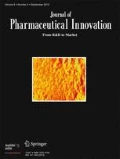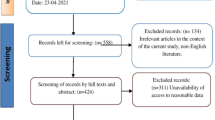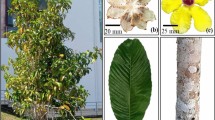Abstract
Background
Lithiasis is an agonizing disease that can be found all around the world. In Sri Lanka, the patients who are suffering from “lithiasis” are increasing gradually yearly. Uses of medicinal herbs as a cure for lithiasis are precious in folk and ayurvedic healing practices. Curing of ureteric calculi is still a challenge for modern medical practices; hence, the medicinal plants have become a hotspot in many disorders including lithiasis to avoid high expenditure and adverse side-effects which cause by the allopathic and western medications.
Objectives
To evaluate the in-vitro anti-urolithiatic activity of Andrographis paniculata plant extract.
Methodology
The methanolic extract prepared by the soxhlet extraction was used to evaluate anti-urolithiatic activity. To identify the chemical constituents, phytochemical analysis was carried out for ethanolic, methanolic, and aqueous extracts following the standard procedures. The titrimetric method was used to evaluate the anti-urolithiatic activity at four different concentrations. Fourier transform infrared (FTIR) spectroscopic characterization was done to identify the functional groups present in the extract.
Results and Discussion
Extract of Andrographis paniculata exhibited a greater capability towards the dissolution of calcium oxalate crystals than that of standard drug cystone. A significant correlation has indicated between dissolution percentage and the concentration of the samples at the 0.05 confidence level. Phytochemical analysis that explicated the presence of alkaloid, saponin, tannin, and flavonoid and FTIR spectrum show the peaks for the presence of alkene, amine, aromatic group, phenol, nitro groups, and alcoholic groups.
Conclusion
This rudimentary research revealed that the methanolic extract of Andrographis paniculata exhibits anti-urolithiatic activity, and it has comparatively high dissolution ability than standard drug cystone.


Similar content being viewed by others
References
Corella J, Kochis E, Galli B, Muner R. Urolithiasis/nephrolithiasis; what is it all about? Urol Nurs. 2005;25(6):427–48 475, 449.
Vijaya T, Kumar MS, Ramarao NV, Babu AN, Ramarao N. Urolithiasis and its causes - short review. J Phytopharmacol. 2013;2(3):1–6. http://www.phytopharmjournal.com/. Accessed 07/08/2020.
Niharika M, Himabindu J, Ramanjaneyalu K. Evaluation of in-vitro antiurolithiatic activity of Tridax procumbens. Int J Sci Res. 2018;7(1). https://doi.org/10.36106/ijsr.
Ramu R, Doraiswamy R, Yadav HM. Anti-urolithiatic activity of aqueous bark extract of Crateva magnal Lour. (DC). Int J Res Ayurveda Pharm. 2017;8:271–8. https://doi.org/10.7897/2277-4343.082126.
Hareendra PPGK, Hunais MM, Suvendrian S, Palihakkara SD, Abeygunasekara AM. Chemical composition of kidney stones obtained from a cohort of Sri Lankan patients. Sri Lanka J Surg. 2015;33(2):14–9. https://doi.org/10.4038/sljs.v33i2.8146.
Sikandari S, Mathad P. In-vitro anti-urolithiatic activity of Butea monosperma Lam. And Nigella sativa Linn. Seeds. Ann Phytomed. 2015;4(1):105–7. https://www.ukaazpublications.com. Accessed 07/08/2020.
Gupta SK, Baghel MS, Bhuyan C, Ravishankar B, Ashok BK, Patil PD. Evaluation of anti-urolithiatic activity of Pashanabhedadi Ghrita against experimentally induced renal calculi in rats. Ayu. 2012;33(3):429–34. https://doi.org/10.4103/0974-8520.108860.
Agrawal S, Gupta SJ, Saxena AK, Gupta N. Urolithiatic property of varuna(crataeva nurvala): an experimental study. AYU. 2010;31:31–6. https://doi.org/10.4103/0974-8520.77161.
Agrawal K, Varma R. Inhabitation of calcium oxalate crystallization in in-vitro by various extracts of Hypits Suaveolens (L). PIOT Int Res J Phrama. 2012;3(3):261–4. http://www.irjponline.com. Accessed 11/08/2020.
Ram J, Moteriya P, Chanda S. An overview of some promising medicinal plants with in-vitro anti-urolithiatic activity. IOSR J Pharm. 2015:23–8http://www.iosrphr.org. Accessed 11/08/2020
Aggarwal A, Tandon S, Singla SK, Tendon C. Diminution of oxalate induced renal tubular epithelial cell injury and inhibition of calcium oxalate crystallization in-vitro by aqueous extract of Tribulus terrestris. Int Braz J Urol. 2010;36(4):480–8. https://doi.org/10.1590/S1677-55382010000400011.
Atmani F, Khan SR. Effects of an extract from Herniaria hirsute on calcium oxalate crystallization in-vitro. BJU Int. 2000;85(6):621–5. https://doi.org/10.1046/j.1464-410x.2000.00485.x.
Saha S, Verma RJ. Inhibition of calcium oxalate crystallization in-vitro by extract of Bergenia ciliata. Arab J Urol. 2013;11:187–92. https://doi.org/10.1016/j.aju.2013.04.001.
Aziz SA, See TL, Khuay LY, Osman K, Abu bakar MA. In-vitro effects of Plantago major extract on urolithiasis. Malays J Med Sci. 2005;12(2):22–6.
Garimella TS, Jolly CI, Narayanan S. In-vitro studies on anti-lithiatic activity of seeds of Dolichos biflorus Linn and rhizomes of Bergenia ligulata wall. Phytother Res. 2001;15(4):351–5. https://doi.org/10.1002/ptr.833.
Verma P, Gauttam V, Kalia AN. Comparative pharmacognosy of pashanbhed. J Ayurveda Integr Med. 2014;5(2):104–8. https://doi.org/10.4103/0975-9476.131728.
Folodun A, Langer P. Harnessing the medicinal properties of Andrographis paniculata for diseases and beyond: a review of its phytochemistry and pharmacology. Asian Pac J Trop Dis. 2014;4(3):213–22. https://doi.org/10.1016/S2222-1808(14)60509-0.
Jarukamjorn K, Nemoto N. Pharmacological aspects of Andrographis paniculata on health and its major diterpenoids constituent Andrographolide. J Health Sci. 2008;54(4):370–81. https://doi.org/10.1248/Jhs.54.370.
Jayakumar T, Hsieh C-y, Lee J-j, Sheu J-R. Experimental and clinical pharmacology of Andrographis paniculata and its major bioactive phytoconstituent Andrographolide. Evid Based Complement Alternat Med. 2013;2013:1–16. https://doi.org/10.1155/2013/846740.
Sakila S, Begum N, Kawsar S, Begum ZA, Zohams. Relationship of anti-fertility effects of Andrographis paniculata and hormonal assay in female rats. Bangladesh J Med Sci. 2009;8(1–2):10–4. https://doi.org/10.3329/bjms.v8il.3183.
Karmakar D, Patki P. Evaluation of efficiency and safety of a herbal formulation cystone in the management of urolithiasis-meta-analysis of 50 clinical studies. Internet J Alternat Med. 2008;8(1). https://doi.org/10.5580/15ea.
Erickson SB, Vrtiska TJ, Lieske JC. Effect of cystone on urinary composition and stone formation over a one year period. Phytomedicine. 2011;18(10):863–7. https://doi.org/10.1016/J.pharmed2011.01.018.
Erickson SB, Vrtisk TJ, Canzanello VJ, Lieske JC. Cystone® for one year did not change urine chemistry or decrease stone burden in cysteine stone formers. Urol Res. 2001;39(3):197–203. https://doi.org/10.1007/S00240-010-0334-x.
Akinyeye AJ, Solanke EO, Adebiyi IO. Phytochemical and antimicrobial evaluation of leaf and seed of Moringa olifera extract. Int J Res Med Health Sci. 2014:4(6) ISSN 2307-2083. http://www.ijsk.org/ijrmhs.html.
Jha R, Ramani P, Patel D, Desai S, Meshram D. Phytochemical analysis of in-vitro urolithiatic activity of Tridaxprocumbens. Int J Sci Res. 2018;7:93–8. https://doi.org/10.36106/ijsr.
Beckett AH, Stenlake JB. 4thEdition Practical Pharmaceutical Chemistry 1997;176–177.
Njokuov OV, Obi C. Phytochemicals constituents of some selected medicinal plants. Afr J Pure Appl Chem. 2009;3(11):228–33 http://www.academicjournals.org/ajpac. Accessed 11/08/2020
Abeygunasekara AM. Urinary stone disease in Sri Lanka. Ceylon Med J. 2004;49(1):41–3. https://doi.org/10.4038/cmj.v49i2.3258.
Wijayarathna K, Abeygunasekera A. Pathogenesis of nephrolithiasis. Sri Lanka J Surg. 2014;31(3):28–32. https://doi.org/10.4038/sljs.v31i3.6421.
Sashikala V, Radha SR, Vijayakumari B. In-vitro evaluation of Rotula aquatic Lour. For anti-urolithiatic activity. J Pharm Res. 2013;6(3):378–82. https://doi.org/10.1016/J.Jopr.2013.02.026.
Abeygunasekara AM. Urinary stone disease in Sri Lanka. Ceylon Med J. 2011;49(2):41–3. https://doi.org/10.4038/cmj.v49i2.3258.
Nirumand MC, Hajialyani M, Rahimi R, Farzaei MH, Zingue S, Nabavi SM, et al. Dietary plants for the prevention and management of kidney stones: preclinical and evidence and molecular mechanisms. Int J Mol Sci. 2018;19:765. https://doi.org/10.3390/ijms19030765.
Pauzi AN, Muhammad N, Sairi NH, Tuan putra TNM, Gul MT, Rahim NFA, et al. The effect of different solvent extraction towards anti-urolithiatic properties of Euphorbhia hirta and Orthosiphon stamineus. International conference on bio diversity 2018. IOP Conf. series. Earth Environ Sci. 2019;269:012040. https://doi.org/10.1088/1755-1315/269/1/012040.
Fouada A, Yamina S, Nait MA, Mohammed B, Abdlekrim R. In-vitro and in-vivo antilithiasic effect of saponin rich fraction isolated from Herniaria hirsuta. J Bras Nefrol. 2006;28(4):199–203 https://www.researchgate.net/publication/266949915. Accessed 26/08/2020
Venkatesan GK, Kuppusamy A, Devarajan S, Kumar AKK. Review on medicinal potential of alkaloids and saponins. Pharamacologyonline. 2019;1:1–20 http://www.pharmacologyonline.silae.it. Accessed 26/08/2020
Chaudhary A, Singla SK, Tandon C. In-vitro evaluation of Terminalia arjuna on calcium phosphate and calcium oxalate crystallization. Indian J Pharm Sci. 2010;72(3):340–5. https://doi.org/10.4103/0250-474X.70480.
Eweka AO, Adaze E. Effects of oral administration of Phyllanthusamarus leaf extract on the kidneys of adult wistar rats: a histological study. Afr J Tradit Complement Altern Med. 2011;8:307–11. https://doi.org/10.4314/ajtcam.v8i3.65294.
Patel PK, Patel MA, Saralai MG, Gandhi TR. Anti-urolithiatic effects of Solamum xanthocarpum fruit extract on ethyleneglycol-induced nephrolithiasis in rats. J Young Pharmacists. 2012;4:164–70. https://doi.org/10.4103/0975-1483.100022.
Author information
Authors and Affiliations
Corresponding author
Ethics declarations
Conflict of Interest
The authors declare that they have no conflict of interest.
Additional information
Publisher’s Note
Springer Nature remains neutral with regard to jurisdictional claims in published maps and institutional affiliations.
Rights and permissions
About this article
Cite this article
Dulanjali, S.S., Srikaran, R. Anti-urolithiatic Activity of Extract of Andrographis paniculata Plant on Calcium Oxalate Crystals: an In vitro Preliminary Study. J Pharm Innov 17, 97–103 (2022). https://doi.org/10.1007/s12247-020-09501-w
Accepted:
Published:
Issue Date:
DOI: https://doi.org/10.1007/s12247-020-09501-w




